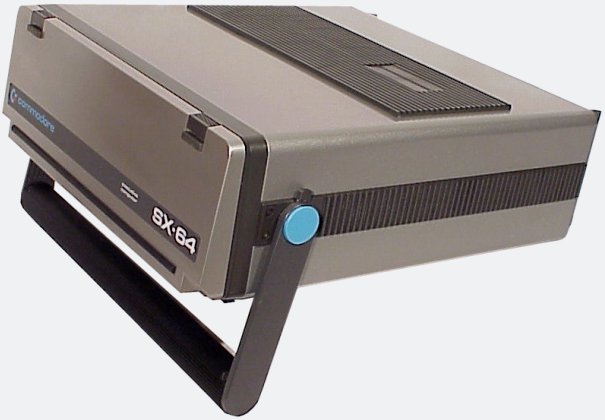
This portable computer is the Commodore SX-64 and is known as the first portable with a color screen. It was released in 1984 to compete with the Osborne 1 and Compaq Portable but it didn’t do a very good job of it. Sales were poor and it was discontinued by 1986. The SX-64 used a MOS 6510 chip and ran at 1.02 MHz. It boasted 64kB RAM and 20kB ROM. It ran slower than both the Compaq Portable and Osborne 1 which didn’t help much in marketing the machine.
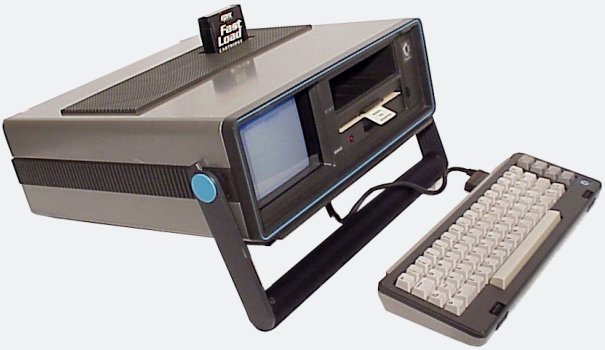
The SX-64 has a built in 5 inch screen that used blue text on a white background which was different than other Commodores that had a blue background. Commodore also got rid of the RF and cassette ports on the SX-64. They did this because the SX-64 had a built in 1541 floppy disk drive as well as the monitor so there was no need for external connectivity.
These design differences led to problems between the SX-64 and other Commodore accessories. The standard printer interface was not compatible, some C64 cartridges will not work on the SX-64, and the Commodore Ram Expansion Unit (REU) was not comaptible with ealry version of the SX-64. Later versions from serial number GA4 and on had a larger power supply and could utilize the REU.
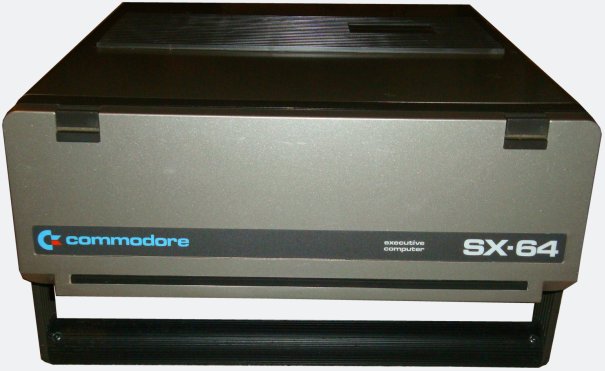
The SX-64 has a cartridge port on the top of the unit and most C64 cartridges could be used. The front of the computer detaches and on the inside of the cover is a keyboard.
Because of the slow processor speed , small screen and compatibility issues it is estimated by some that less than 10,000 SX-64’s were ever sold. This is in contrast to about 20 million C64’s being sold. Commodore had also announced the DX-64 which was better than the SX-64 so many buyers waited to buy it instead of the SX-64. Apparently they didn’t learn from Osborne’s similar mistake of announcing upgraded units before the product cycle of the previous unit had run its course.
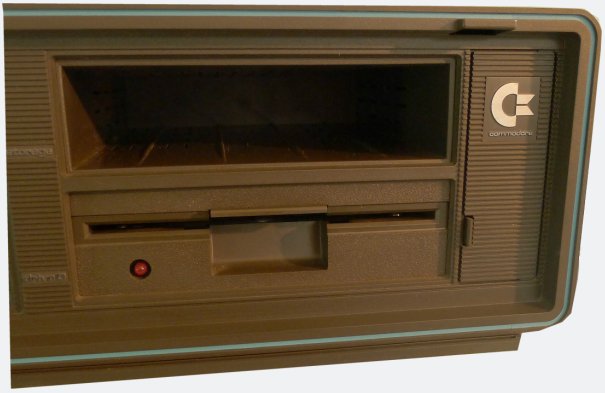
At just over 23 pounds the SX-64 strains the definition of portable. While it does have a rugged carrying handle it does not have a built in battery so it needs to be near an outlet to be plugged in.
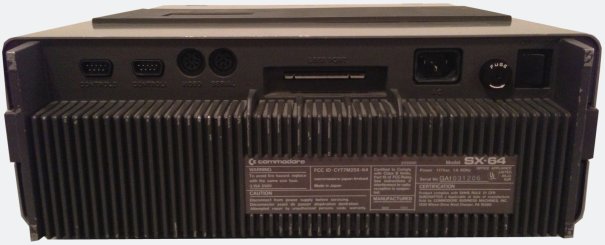
The Commodore SX-64 retailed for $995.00 which was fairly competitive with other portables on the market but far more expensive than the standard C64. Today they are fairly rare and sell for about $200 to $300 though very nice units have sold for $800.
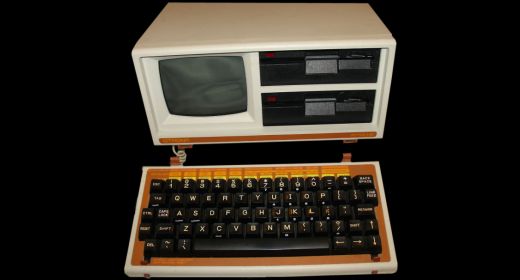
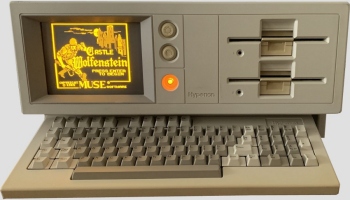
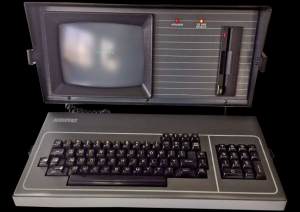
There is a serial database of produced SX-64’s:
https://www.commodore-sx-64.com
It looks like at least 50.000 SX-64 have been produced and not only 10.000.
Also, Commodore under contract issue a special upgraded Military edition. I have one that came from the US Airforce that was used in the engineering / design department of the Airforce from Ohio..